Philips luminaire in Hostetin, plain and adapted
– an overview of (specific) ground illuminances
(a list of all three luminaire types employed in Hostetin is
available)

Values below the scale are illuminance / 1 lx. This is for
(unrealistic) “unit” case
that luminaires would have lamps producing 1 klm only,
would be point-like and just 1 m over the terrain.
The house-side emissions are never needed and always obtrusive in
Hostetin (as they are, if not adequately faint, almost everywhere). So I
took a glossy strip of a thin aluminium sheet sized about 7 cm
× 20 cm and installed it (laid onto the bottom glass, with
corners bent so that it could not shift) just below the lamp. The result
was far less light at the house side, and quite a lot of additional
light at the street (50 % to 100 % more, esp. at several pole
heights from the luminaire), starting by a lane which is some
0.5 pole height far from the pole. The light output ratio went down from
80 per cent to some 66 per cent. But the useful flux increased!
(Another mirror lamp positions and strip size and
shape might suit situations where the
luminaire is not set back far from the street. But the principle is the same:
recycle unwanted light partly the desired one, with reduction in total light
emissions.)
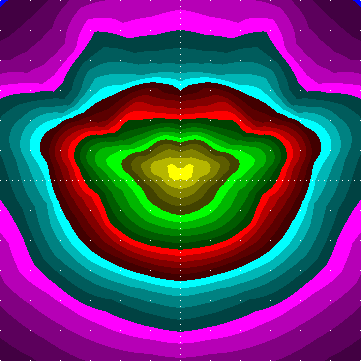 |
– photometry plot from the *.ies file. White dots are spaced each one
pole height, axes cross below the luminaire.
|
And a real imaging photometry
from a Fuji S5000
camera (illuminated wall, luminaire 0.50 m from it, background
luminance subtracted). To my suprise, the wall albedo of 0.2 and the
4.4klm lamp produced values (luminances / 1 cd/m2) very close
to the expected specific illuminances ( / 1 lx), with no need of scaling...
The axes and dots (as if each pole height) overlaid on the
images should be adapted to perspective, or even better, the images
rectified instead. Then the he measured luminances could be compared
with the above illuminances in detail. Without rectification, the
photographed
sideways maxima to the street side are shortened by a perspective. For a
reliable rectification, however, a grid on the wall, using real white
dots, should be painted (next time...).
(Luminances at far right are influenced a lot by tertiary light
from another wall, going toward the observer. Without that wall they
would continue to diminish away from the luminaire, as in the
theoretical plot.)
|
|
Original luminaire
(mirror extreme street-side, lamp at extreme house-side)
|
Adapted luminaire, with an added metal strip inside
|
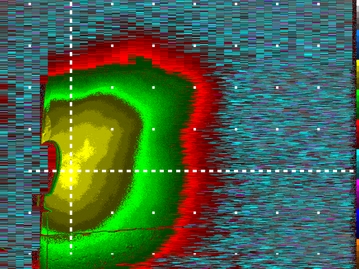
| 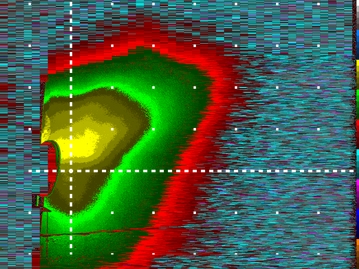
| short exposures
|
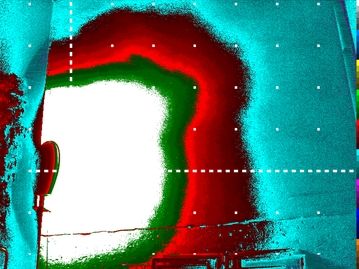
| 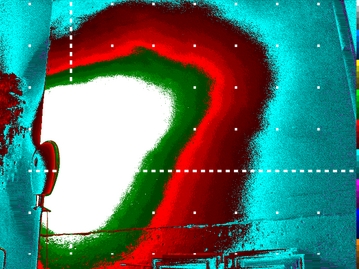
| long exposures
|
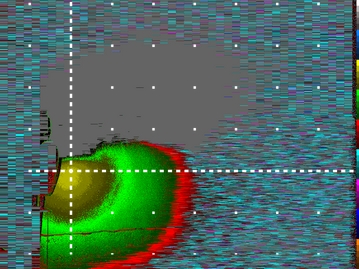
| 
| differences at short
|

| 
| ... and at long exposures
|
|
To make the measurement more understandable,
these are real images at mid-exposure:
|

|
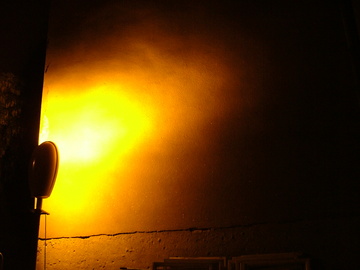
|
And this is the view just in background illumination:
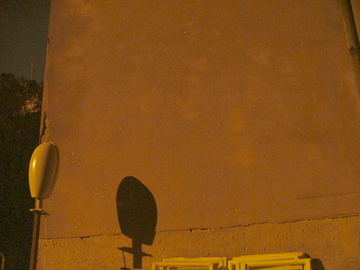
(All processed data are within the ../clona directory,
the summary photometric values are within the
../clona/infod.txt file. Nothing easy
to grasp.)
Jenik Hollan, Jan 2007


